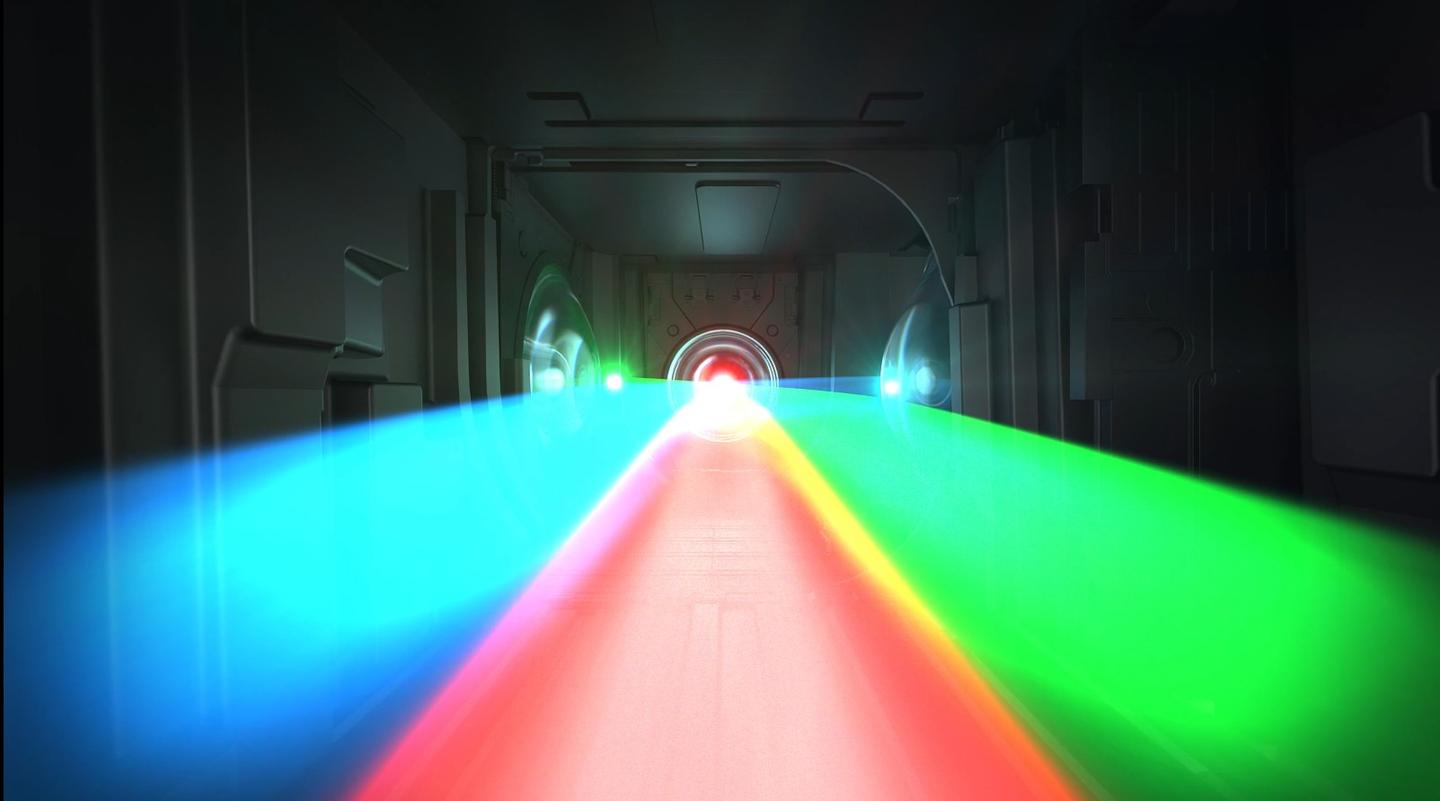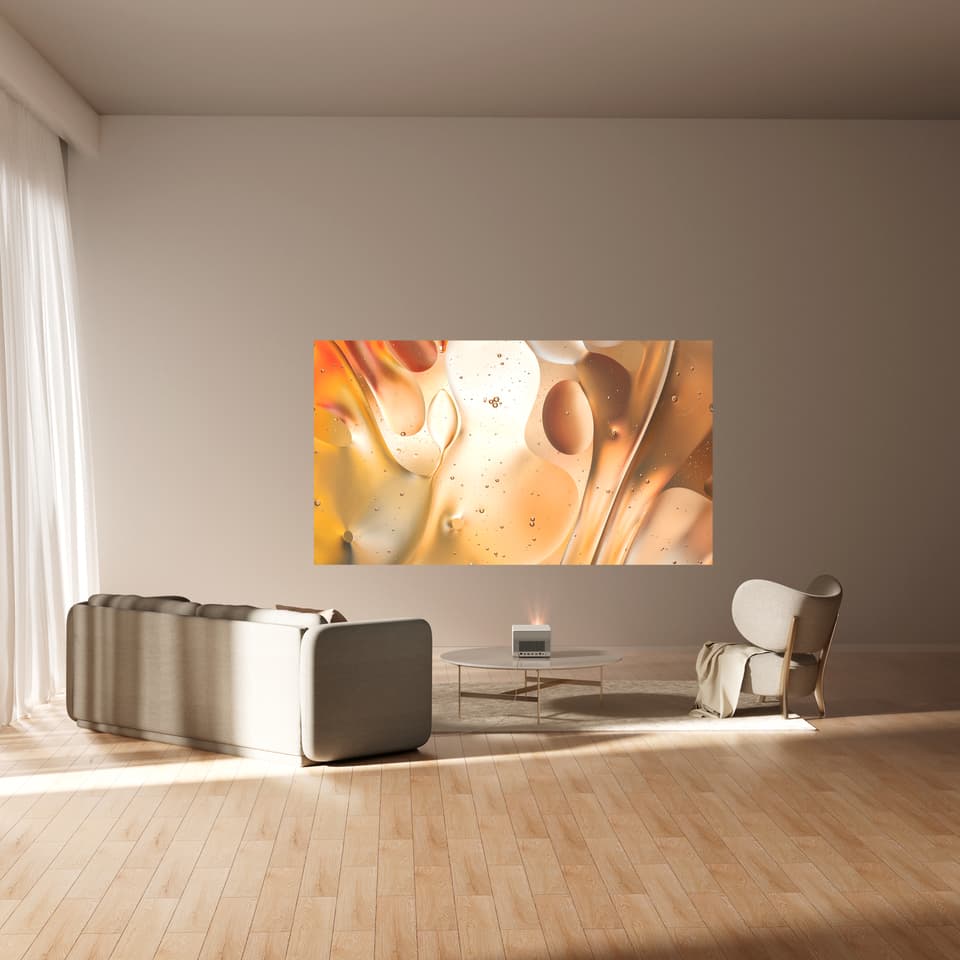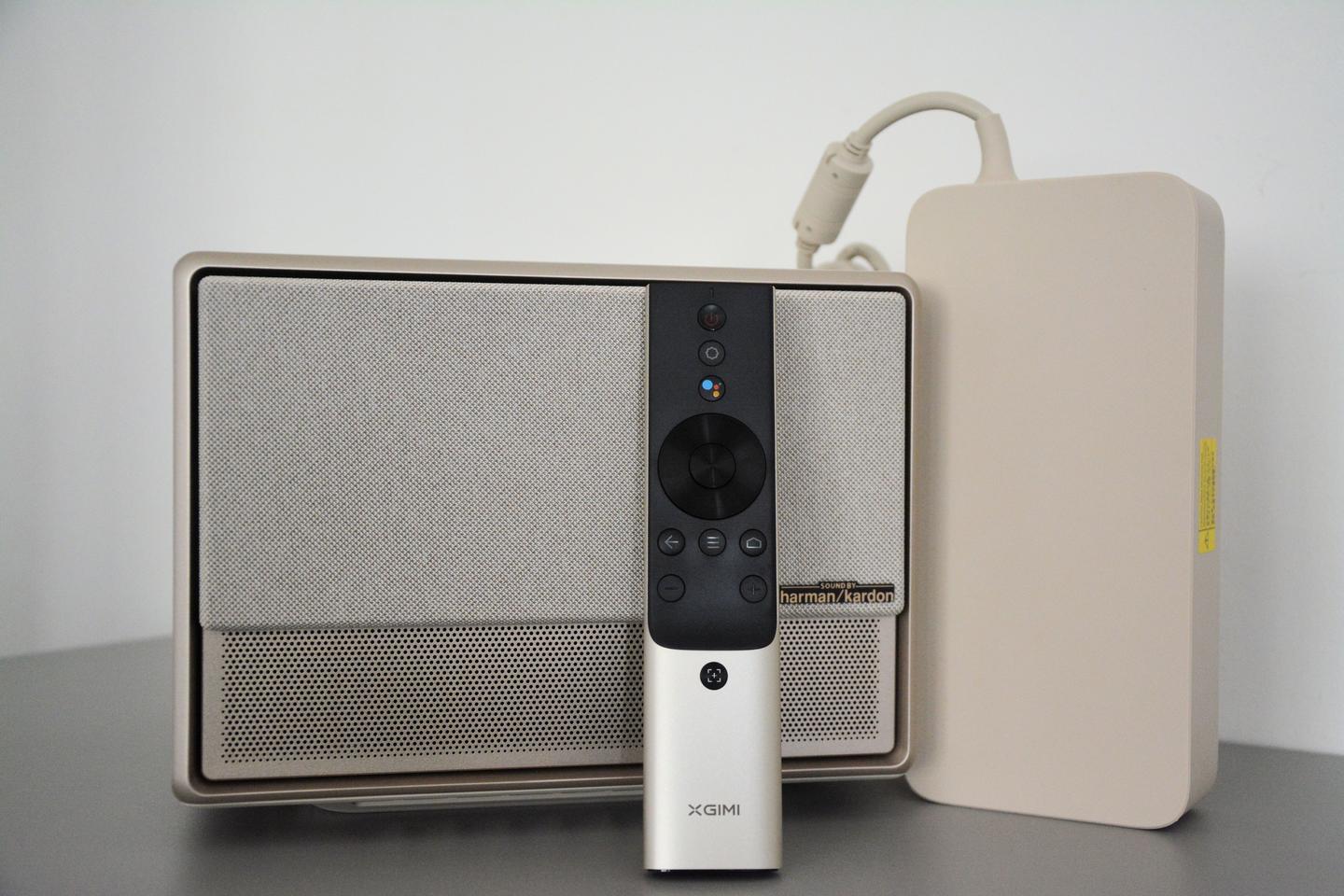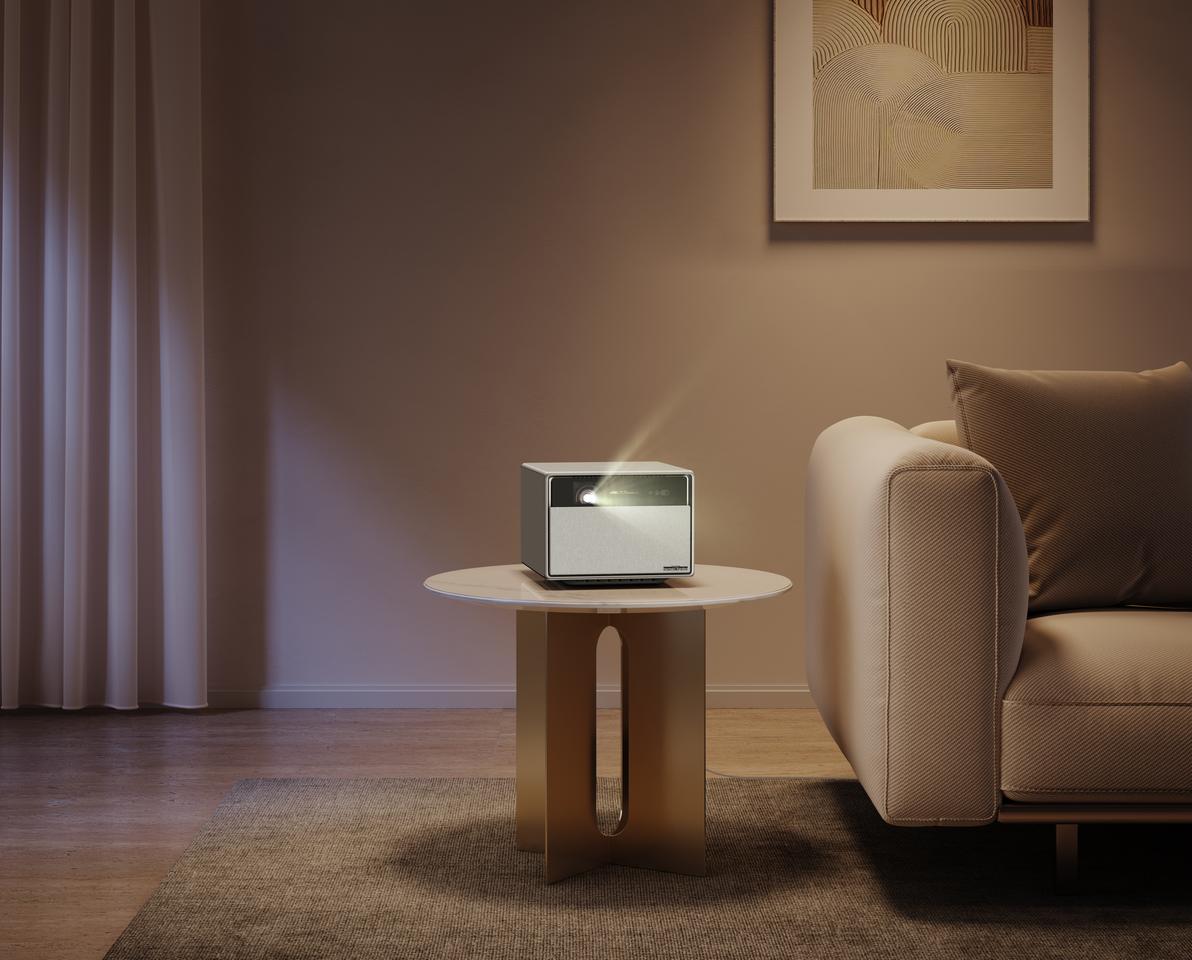A stylish home cinema smart projector with a novel five-channel dual-light optical engine and Dolby Vision? The Horizon Ultra went on sale late last year, and when I was recently given the opportunity to play catchup with the tech-packed home projector, I jumped at it.
China’s XGIMI founded in 2013, and formed an audio tech partnership with Harman Kardon the following year. The company signed with Google in 2015 to bring Android TV to the home projector market, which was realized with 2018’s MoGo Pro.
A new Horizon home cinema line was introduced in 2020, and we were very impressed after the 4K-capable Pro model made its way to our review bench. Now that range has a new flagship, with a new look and a dual-light optical engine.
During its research, XGIMI found that single-laser projectors offered high brightness but could let the show down in the color reproduction and quality departments. Triple lasers did better on the color front, but some thought visuals to be “frosty and grainy” and suffer from color fringing. LED light sources, meanwhile, could result in more natural colors but were often relegated to after-dark viewing only due to relatively low brightness output.

XGIMI
After much tweaking, the company’s engineers managed to combine both technologies in one five-channel optical engine – comprising one red laser, one red LED, one green LED and two blue LEDs. The first model to feature this dual-light technology is the Horizon Ultra.
It’s rated output is 2,300 ISO lumens, making it the brightest Horizon projector so far. However, this did have me wondering whether that figure was actually on the low side, as viewing HDR content during daylight hours with the blinds partially drawn was detailed and sharp, color-rich and washout-free.
The Ultra doesn’t offer native 4K projection, but sports fast-pixel-shifting DLP with 0.47-inch DMD to deliver visuals at 3,840 x 2,160 resolution. A 1.2 to1.5:1 throw ratio makes for image rectangles from 40 diagonal inches right up to 200, though the recommended maximum is 120 inches. I don’t have a screen or spare wall that big, so had to “make do” with 80 inches.
The smart projector also boasts Dolby Vision support for scene-by-scene adjustments, with support for HDR10 and HLG too. XGIMI states that it can cover 99.9% of the Rec.709 color gamut and more than 95% of the wide DCI-P3 standard, which did in fact translate into wholly impressive onscreen imagery.

XGIMI
In use, auto-detected HDR content was delivered with aplomb, offering vivid, rich colors and a nice sense of depth backed up with impressive brightness chops. However, I found myself watching quite a few videos with the High Color Accuracy setting engaged instead, for a more natural feel to the delivered content – at least to my eyes.
It is worth mentioning that though the Ultra doesn’t manage TV-level handling of darker scenes – black can often appear as dark gray – it performs better than expected for its price tag, and this doesn’t detract too much from an overall excellent performance.
DLP projectors also have a bit of a bad rep for producing the rainbow effect, where color stripes dance around the edges of your vision, but I didn’t clock any of that naughtiness going on here. That’s not to say it won’t happen, just that I didn’t see it happen during my review.
Of note here are the motorized optical zoom chops, with ease of placement further assisted by XGIMI’s ISA 3.0 image adaptation hardware/software technology – which includes auto keystone, autofocus, screen alignment, eye protection (which drops the output from the light source when someone passes in front), obstacle avoidance and wall color adjustment.
The projector can be plonked on a coffee table, but also comes with a tripod mount – though at 11.5 lb (5.2 kg) you’ll need a sturdy one. It supports off-center setup angles up to 45 degrees, but I did notice some sharpness loss at the more exaggerated angles. I suffered the occasional ISA misfire too, resulting in the viewing rectangle being more of an irregular trapezoid (corrected by moving the unit or tapping the remote to trigger a retry).

Paul Ridden/New Atlas
There are a number of preset picture and brightness modes to choose from, including custom fine-tuning of parameters like contrast, saturation, gamma and color temperature. A feature in the settings can also automatically adjust color and brightness based on the ambient light detected by its sensors. A dynamic iris feature is available for dialing such parameters up or down, plus the option to enable bright/dark room options when watching Dolby Vision content is included. And three levels of motion compensation can be set as well, or disabled.
Taking care of business inside is a quad-core MT9629 smart display SoC with dedicated Mali graphics and AI processing chops, supported by 2 GB of RAM and 32 GB of storage. Bluetooth 5.2 and Wi-Fi 6 wireless connectivity feature too, and the Google partnership means that Android TV 11 is at the heart of the watch experience.
This might not be quite as swanky as Google TV but is pretty straightforward in use and includes shortcuts for Prime Video, Disney Plus, Paramount Plus and Apple TV as well as access to thousands of entertainment apps via the Play Store. Native Netflix is not possible here, so you’ll need a workaround or a streaming stick. Support for 3D content is available though, but you’ll need to buy a pair of glasses.
The unit’s two HDMI ports support 4K/60Hz frame rates, one of which has audio return for routing Atmos soundtracks to eARC-capable soundbars or home theater systems. That frame rate might not be sufficient for dedicated console gamers, but the projector does boast a game mode that reportedly gets input lag down to around 18 milliseconds. I’m not a console gamer, so didn’t get the opportunity to test this spec for myself. Rounding out cabling options are a pair of USB 2.0 ports, Ethernet LAN, and optical audio out plus a 3.5-mm headphone jack.

Paul Ridden/New Atlas
The fruits of the other big-name partnership sees a pair of 12-W Harman Kardon speakers supporting DTS-HD and a Dolby suite that includes Studio Sound and Digital Plus. The sound is thrown out of the front, but mostly seemed to come from somewhere near the screen a few feet away to offer a goodly amount of detail wherever the watch party is seated in the room.
Around 30% volume proved more than enough to reach the corners of my open-plan living room, with enough bass end in the mix for engaging action scenes. In short, you shouldn’t need to make use of the ARC or optical connections for satisfying audio in general use, though it’s always good to see them included.
The Ultra represents something of a design departure for XGIMI, and is aimed at serving as a stylish focal point in the living room rather than something that’s shoved in a corner between uses. It’s still boxy, but has neutral colors and a high-end look so as not to impose on living room decor – though most of my other audiovisual hardware is tasty hi-fi black so it kinda failed its first mission in my house.
When powered on, the lens cover that stretches across the upper front of the housing is lowered by motor to become a speaker grille, revealing the lens and sensors. There’s venting to the bottom and rear to help keep the system from running hot. Operational noise is generally not loud enough to spoil viewing, but certain settings – such as bright and performance modes – can result in a noticeable bump in fan noise.
Apart from a power-on button around back, the Ultra lacks on-device controls, instead wholly relying on the same Bluetooth remote as the Aura I reviewed a while back, which is easy enough to navigate but doesn’t have a backlight so stabbing in the dark could be a problem. Google Assistant is ready to take your voice commands however.
Though described as portable, the projector is powered by a sizeable and rather heavy DC adapter brick in a similar gold color, which shouldn’t be an issue unless you’re planning to ceiling mount it, when cable management and positioning might be a head scratcher.

XGIMI
The bottom line
Smart projectors – particularly ultra-short-throw beasts – are often pitched as big-screen TV replacements, and certainly have their pros (such as not dominating a living space until it’s showtime) and cons (including not being in the same league for handling dark scenes as modern TVs).
The dual-light technology at the heart of the Horizon Ultra is an intriguing solution to address known shortcomings of laser and LED light sources. And it appears to work, with the projector delivering bright, vivid, rich and detailed visuals supported by capable built-in sound.
Currently the top model in the Horizon family – at least until the Max arrives some time this year – the Ultra is on sale now for US$1,699 – which is quite an attractive price point for such a powerful home entertainment hub. Highly recommended.
Product page: XGIMI Horizon Ultra
Source of Article